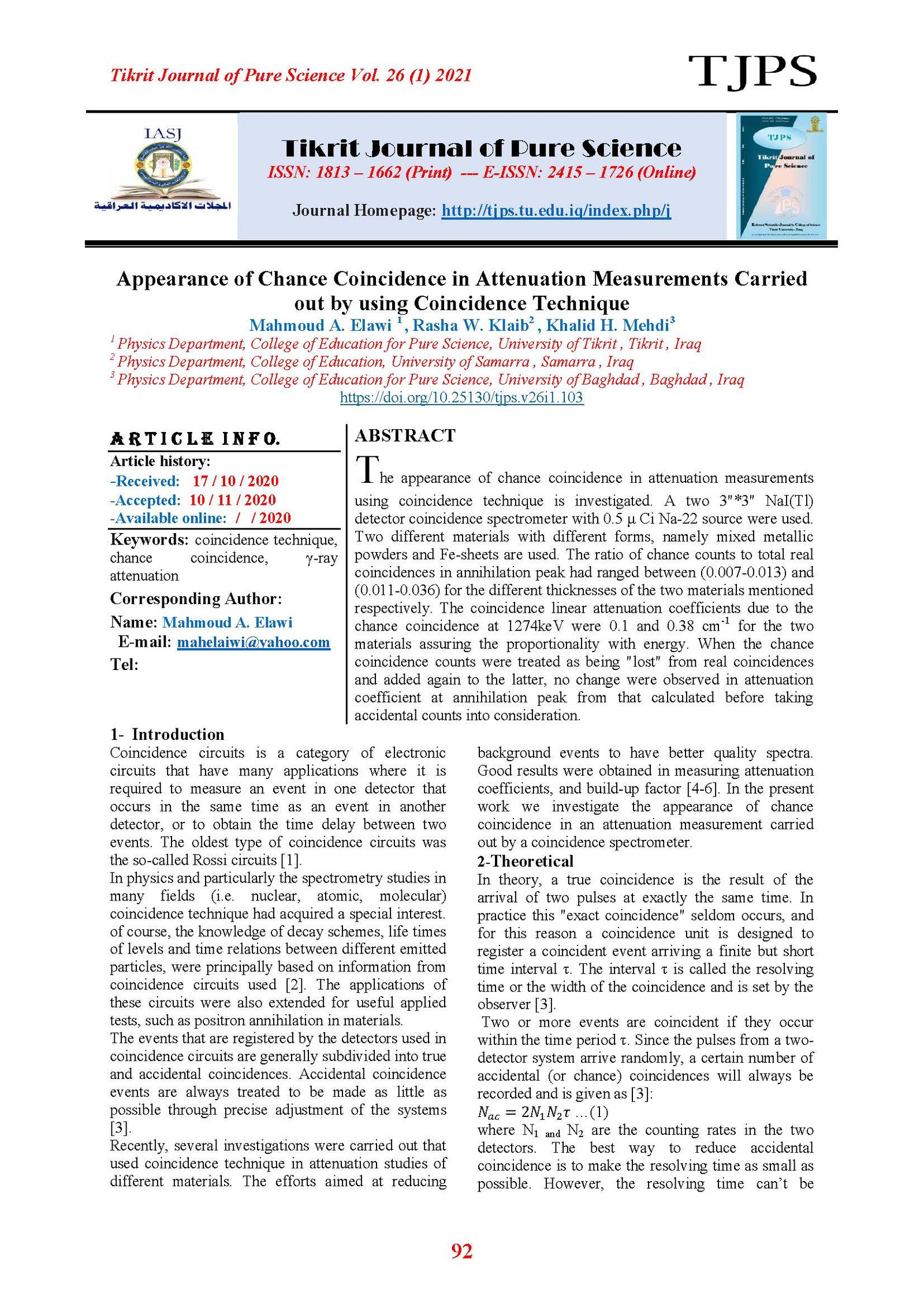Appearance of Chance Coincidence in Attenuation Measurements Carried out by using Coincidence Technique
Main Article Content
Abstract
The appearance of chance coincidence in attenuation measurements using coincidence technique is investigated. A two 3"*3" NaI(Tl) detector coincidence spectrometer with 0.5 μ Ci Na-22 source were used. Two different materials with different forms, namely mixed metallic powders and Fe-sheets are used. The ratio of chance counts to total real coincidences in annihilation peak had ranged between (0.007-0.013) and (0.011-0.036) for the different thicknesses of the two materials mentioned respectively. The coincidence linear attenuation coefficients due to the chance coincidence at 1274keV were 0.1 and 0.38 cm-1 for the two materials assuring the proportionality with energy. When the chance coincidence counts were treated as being "lost" from real coincidences and added again to the latter, no change were observed in attenuation coefficient at annihilation peak from that calculated before taking accidental counts into consideration.
Article Details

This work is licensed under a Creative Commons Attribution 4.0 International License.
Tikrit Journal of Pure Science is licensed under the Creative Commons Attribution 4.0 International License, which allows users to copy, create extracts, abstracts, and new works from the article, alter and revise the article, and make commercial use of the article (including reuse and/or resale of the article by commercial entities), provided the user gives appropriate credit (with a link to the formal publication through the relevant DOI), provides a link to the license, indicates if changes were made, and the licensor is not represented as endorsing the use made of the work. The authors hold the copyright for their published work on the Tikrit J. Pure Sci. website, while Tikrit J. Pure Sci. is responsible for appreciate citation of their work, which is released under CC-BY-4.0, enabling the unrestricted use, distribution, and reproduction of an article in any medium, provided that the original work is properly cited.
References
[1] Rossi, B. (1930), Nature, 125.
[2] Lederer, C.M., and Shirley, V.S. (eds). (1978). Table of Isotopes, 7 th edn. Wiley Interscience Publications New York.
[3] Tsoulfanidis, N., (1995). Measurement and Detection of Radiation, 2ndedn, Taylor and Francis.
[4] Elawi, M.A., Mehdi, K.H., Klaib, R.W. (2017), Investigation of gamma-ray attenuation in metallic powders using gamma-gamma coincidence technique, Tikrit Journal for pure science, vol. 22, (12).
[5] Elawi, M.A., Abbas, L.A., Salih, S.A. M., (2017), Use of gamma-gamma coincidence technique in Investigating gamma-ray attenuation at different energies, Tikrit Journal for pure science, vol. 22, (12).
[6] Elawi, M.A., Khalil, K.I., Hamad, D.K. (2017), comparison of gamma-ray attenuation measured by direct and coincidence spectra, Tikrit Journal for pure science, vol. 22, (12).
[7] Knoll, G., (2000), Radiation Detection and Measurement,
